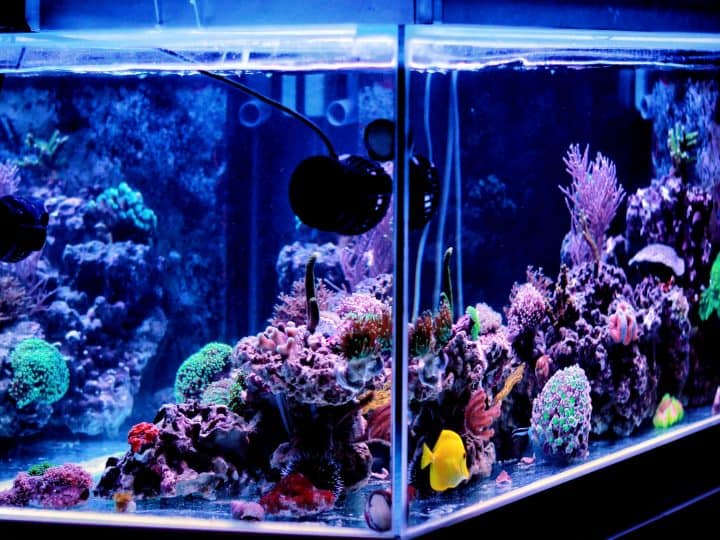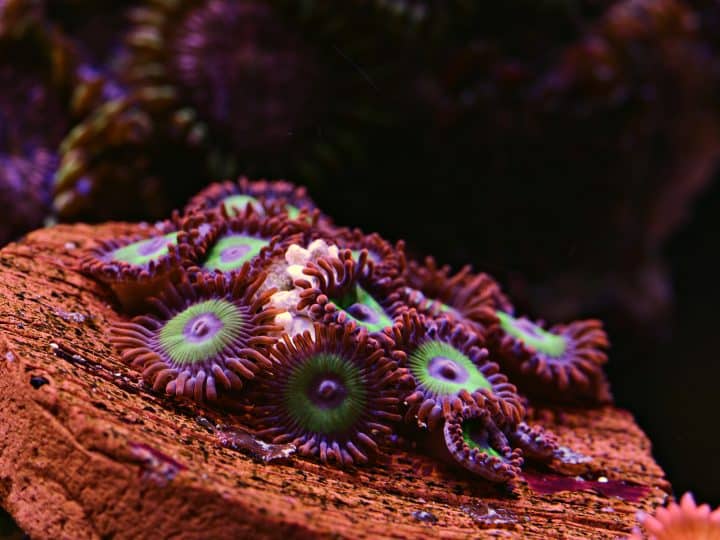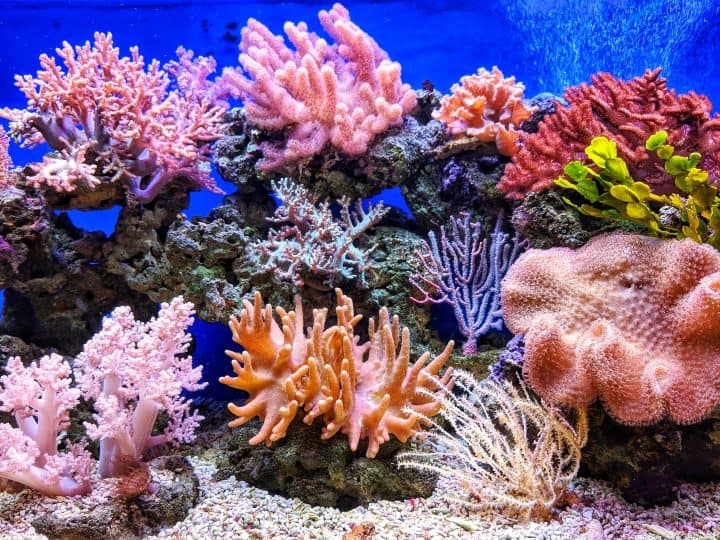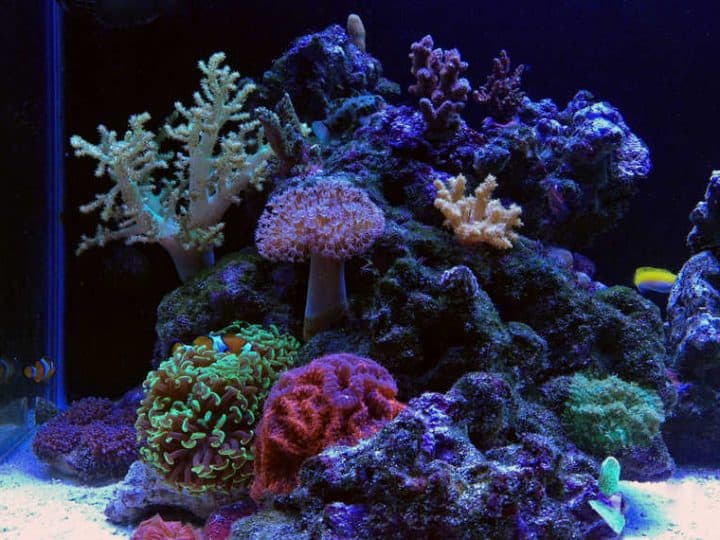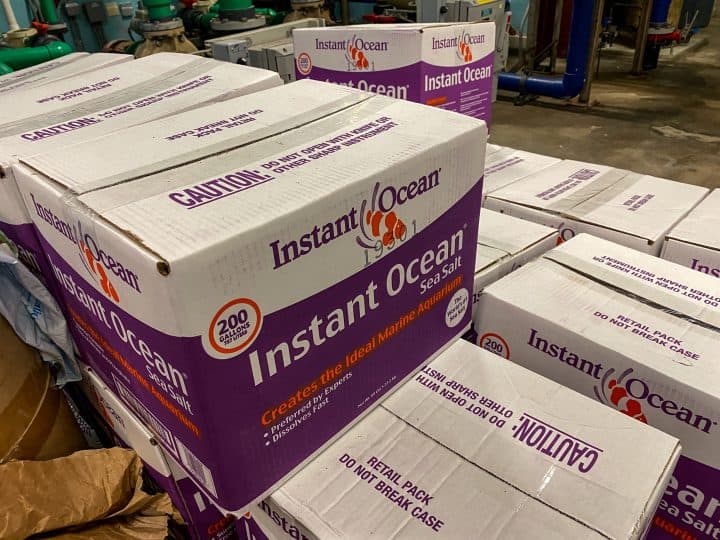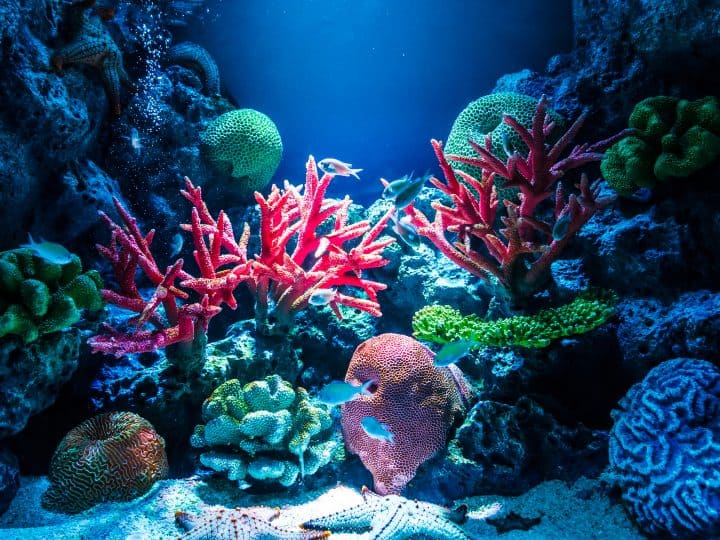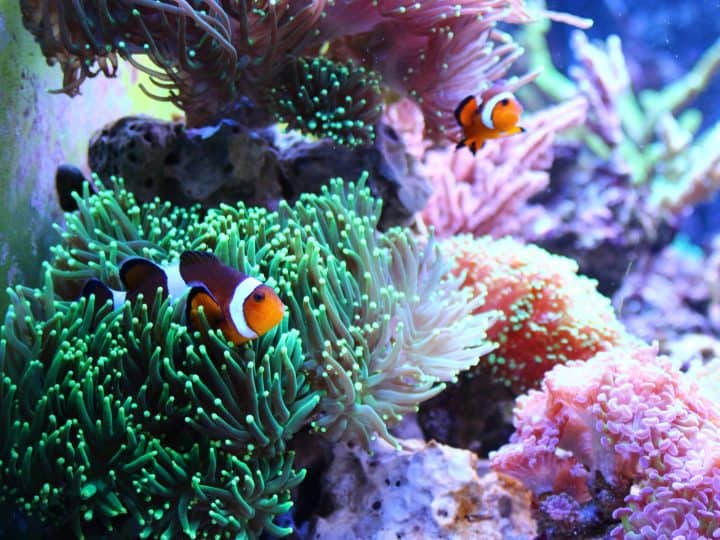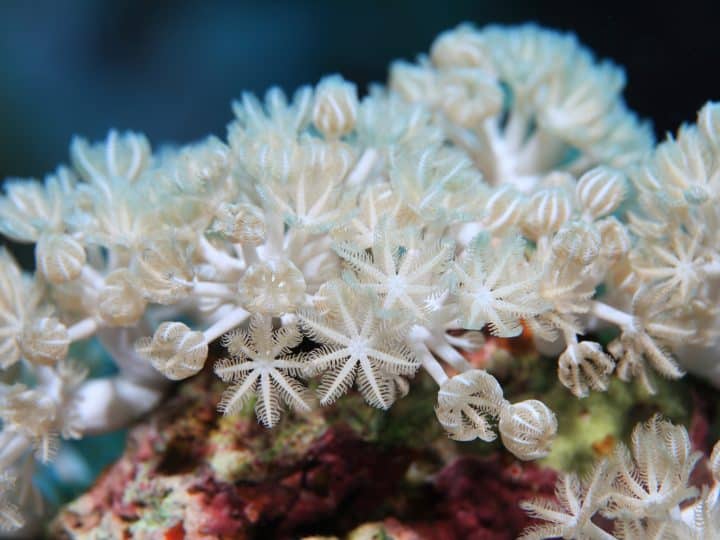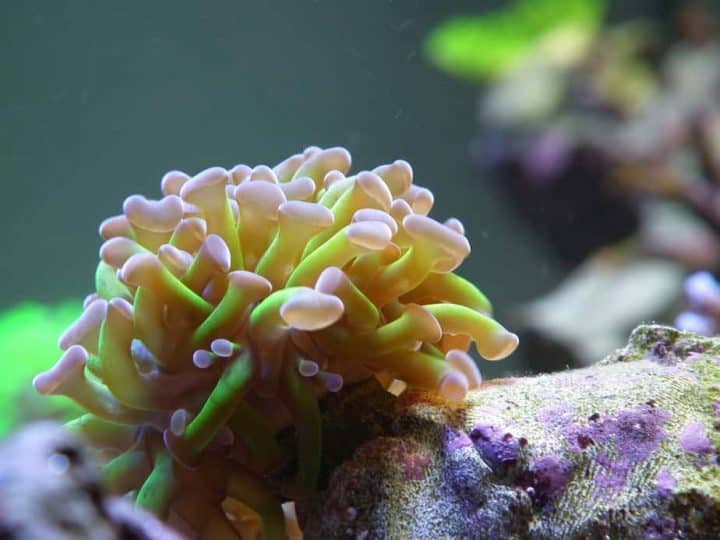There are so many different corals out there, it’s intimidating. I remember doing my first bits of research concerning corals, and it was confusing! People were constantly talking about different types of coral, and I didn’t know what they meant.
There are three types of coral: soft, LPS and SPS coral. Soft coral is the easiest to keep and has not stony structure. LPS stands for Large Polyp Stony and LPS coral is more difficult than soft coral but easier than SPS coral which stands for Small Polyp Stony coral.
All three coral types have different care requirements and characteristics. In this article I’ll give you a better overview and understanding of the three coral types. It’ll make researching corals a lot easier, so let’s immediately dive into the information.
Some Introductory Facts About Corals
Before we get to that, however, it is important to understand a few things about corals in generals. These are invertebrates and animals that are usually present as colonies but can also exist independently in some cases. They are different from plants and fishes and they have very unique biological traits where both photosynthesis and organic food are equally important.
All Corals Have a Unique Diet
Most of them fulfill a part of their dietary requirements with the help of a symbiotic relationship with microalgae known as Zooxanthellae. These algae need light for carrying out photosynthesis and the food they produce this way is shared with the corals in return for safe accommodation. Many corals also supplement their diet by capturing microorganisms from the water column and that is why providing corals with all the nutritive elements they need is one of the first challenges hobbyists face in the home aquarium.
Its all about the polyps
Another trait that is common among all corals are the polyps. Corals are basically colonies of polyps that are genetically identical. While there are thousands of individual coral species that you can keep in your home aquarium each with its own unique traits, they can be broadly classified into three, and here is a detailed look at each of them.
The First Type: Soft Corals
As the name suggests, this includes all the types of corals that are soft and bendable. They resemble plants and trees. However, these aren’t reef-building and they do not have the hard exoskeletons that are usually associated with corals.
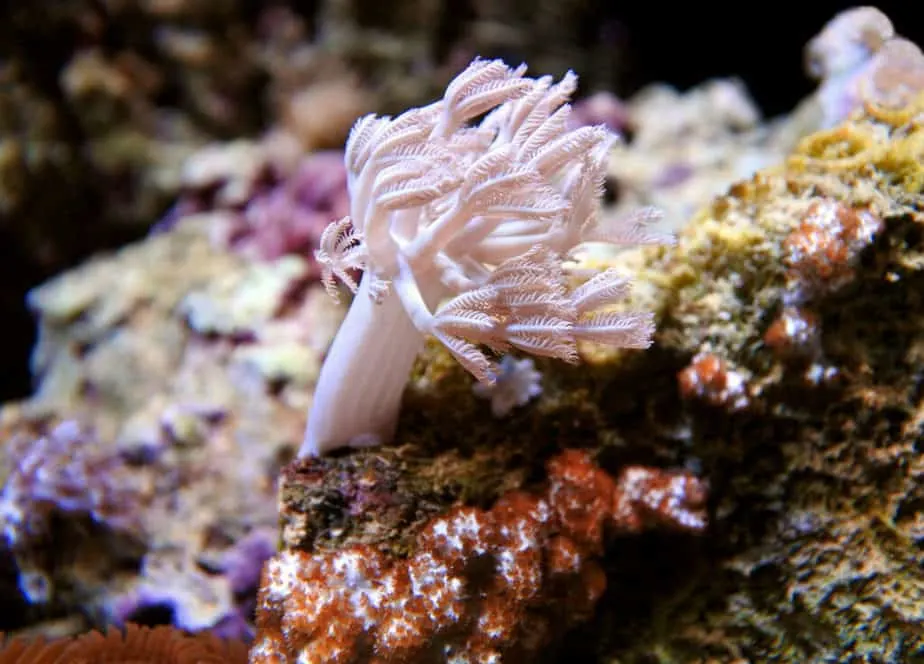
They do have skeletal structures known as sclerites but they are not as rigid which is why these corals can be quite flexible and mobile. These corals form colonies that can be fan-shaped, bushy, membranous, lobate, digitate, encrusting, massive, arborescent, and whip-like. As far as color goes, they can be quite varied and can range from the mundane looking to the almost otherworldly and they owe their coloration to the aforementioned Zooxanthellae.
Diet of Soft Corals
While their symbiotic relationship with these Zooxanthellae allows them to meet a part of their nutritional needs, they are also active feeders that capture planktons and ciliates from the water column. As long as you have a healthy aquarium with live rocks, these microorganisms should be naturally present and that coupled with a good lighting system should take care of keeping your soft corals properly fed. You can further supplement this with commercially available coral food.
Be Mindful of Toxins in Some Soft Corals
As the natural home of these corals is the ocean with a host of hungry predators, it is quite easy to wonder why these corals evolved into their soft and squishy form which would give them the appearance of being an easy snack for these predators. This is why they have also evolved certain defense mechanisms and it is vital to know about these if you plan to keep these corals.
Since they do not have the structural strength to use force, these corals employ chemical warfare to protect themselves. They have stingers with which they can inject toxic compounds into anything they might perceive as a threat that get too close. While some of these chemicals aren’t too harmful to humans, others can be quite toxic.
The reaction to these compounds also vary wildly from person to person especially if there is an allergic reaction. That is why it is very important to handle these corals very carefully and only when wearing proper protective gear. It is also equally important to house them with only those corals that can defend themselves. Similarly, it is important to make sure that any fish you add to the reef tank are compatible with these corals.
Physical Structure of Soft Coral
Structurally, the polyps of these corals are connected by tissues that resemble sheets which are known as coenosarc. Some soft corals also encrust themselves with other sea objects. Others use a fibrous protein to create a tree-like appearance.
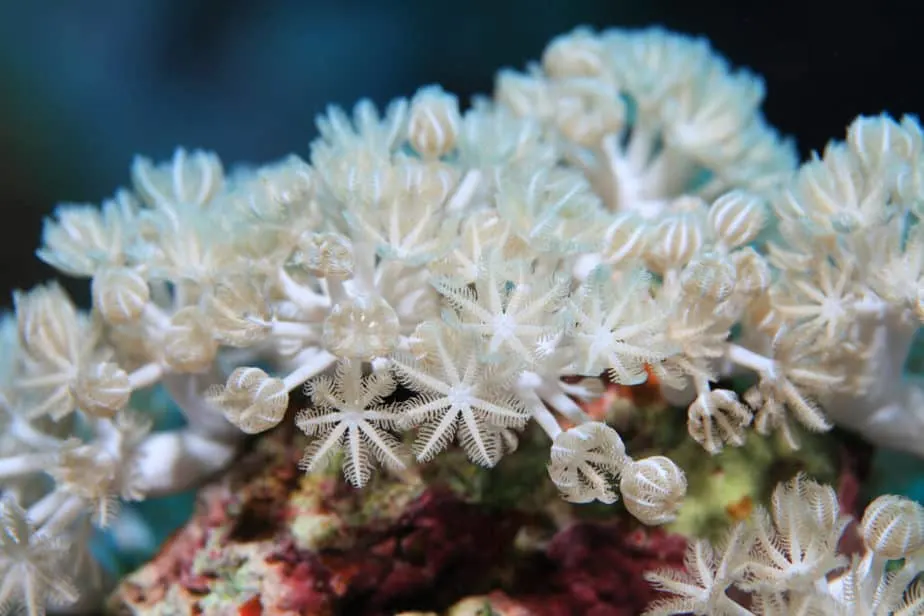
Soft Coral Propagation
These corals can reproduce both sexually and asexually. Their colonies can either release sperms and eggs into the water columns where the egg gets fertilized to form a larva. A single colony of soft corals can produce thousands of larvae but they generally do not survive in the home aquarium. Instead, budding is the more viable mode of reproduction along with dividing where a polyp splits up into two either vertically or horizontally.
Other Requirements
In the home aquarium, these corals tend to do really well in low to moderate lighting and moderate levels of water flow and they tend to be the most beginner-friendly.
Popular Examples
Great soft corals (check out this page for a list of corals that can add movement to your reef tank) for a reef aquarium include
- Discosoma Corals
- Pachyclavularia Corals
- Palythoa Corals
- Alcyonium
- Zoanthus Corals
The next two major groups of corals are collectively known as stony corals. Unlike their softer cousins, these corals have a hard exoskeleton and hence the name.
The Second Type: Small Polyp Stony Corals (SPS)
When most people think of corals, this is probably the type of coral that they picture. However, these are also the most difficult corals to look after in the home aquarium. Usually, there are only two types of results when trying to keep these corals. They either thrive which leads to one of the most fulfilling experiences in this hobby or they can just wither away leaving you helpless and a little bitter.
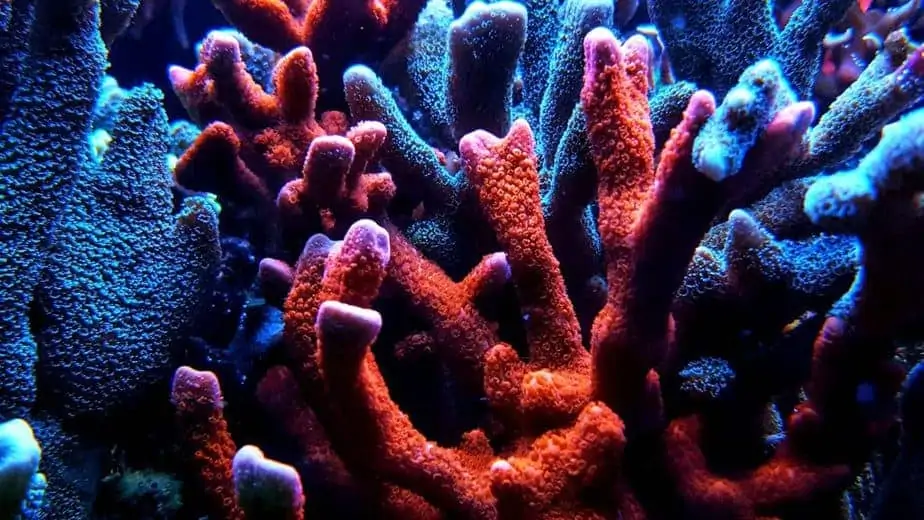
SPS Can Be Quite Demanding
This might give the wrong impression that this type of coral has exorbitant requirements that necessitate the need for some type of an elaborate setup. The truth though is that these corals feature more or less the same set of requirements as the other two types of corals. Where they differ is in how sensitive they are. They need a very stable environment where all the parameters stay consistent and within a narrow window.
Who Should Keep SPS Corals
While some SPS corals are easier to keep than others, they are generally demanding and if you are an absolute beginner when it comes to corals or reef tanks then you should steer clear of these types of corals. If, on the other hand, if you are fairly competent when it comes to keeping some of the hardier corals and are looking for a challenge then SPS corals are a great option worth considering.
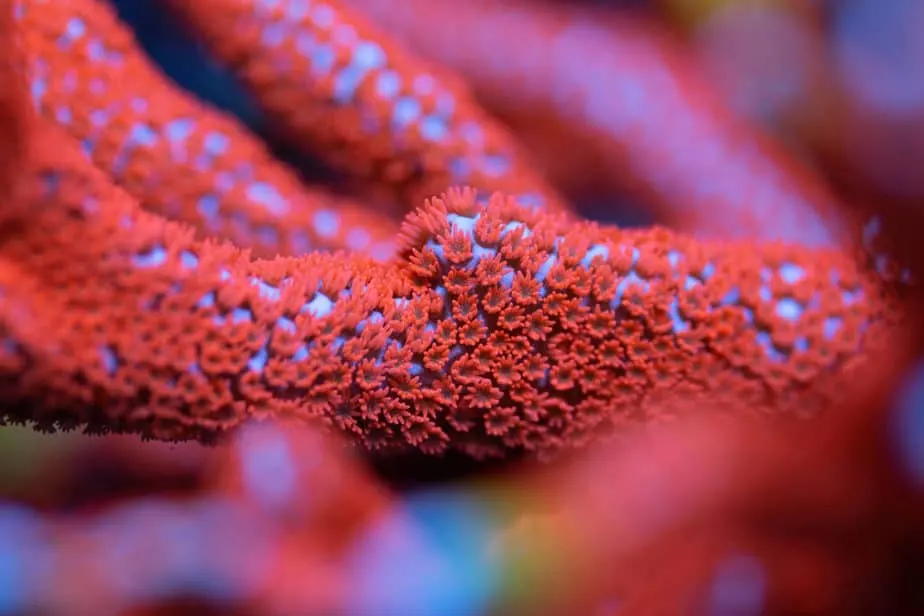
Why are they called Small Polyps? It is just as simple as it sounds. They have smaller polyps. The important factors to keep in mind to successfully house these corals are many.
SPS Has Serious Lighting Requirements
Lighting is a good place to start with. They generally require strong lighting but that isn’t enough. These corals are so finicky that you will have to acclimatize them to your aquarium’s lighting when you first get them. Start by keeping them in an area with low light and slowly move them around the aquarium until you find an ideal spot. This is a very critical phase and you have to be ready to move them around on a moment’s notice at the first sign of distress. If the polyps start extending fully then it is a sign that the coral is finally happy.
Water Flow Requirements of Sps
Next comes water flow. Moderate to strong water flow is needed for most SPS corals as they occupy shallow waters in their natural habitat. This helps with everything from photosynthesis to waste disposal. It also helps these corals to capture the micro foods they need from the water column and aids in their respiration as well. These corals are very sensitive as far as water flow is concerned as well. If it isn’t adequate enough, the fleshy parts of these corals will start to decay slowly leading to their eventual demise.
Stable Water Parameters Are Key
Water parameters form the final piece of the puzzle. The exact values will vary depending on the specific type of SPS corals in your reef aquarium but one thing they will all have in common is the need for stability. Even a minor change in the water chemistry can have very adverse effects and this is especially true for some of the more demanding SPS corals.
The Trick To Keeping SPS Corals Successfully
Ideally, you should have a very strict monitoring and maintenance schedule and the life support systems such as the filter and the protein skimmer should have fail-safes. Dosers, auto top-off systems, and sophisticated aquarium controllers will be needed once you dive deep into the world of SPS corals.
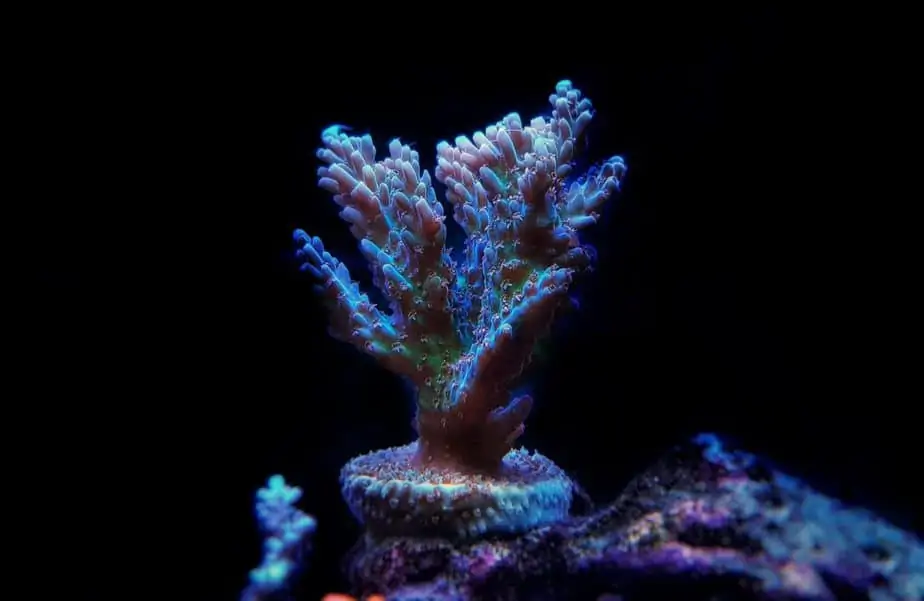
While all of this might seem intimidating, the joy of successfully getting these corals to live and thrive in your reef tank is second to none and it is something that you can pull off with a bit of experience, knowledge, and a diligent regimen.
Popular Examples
Some great SPS corals include:
- Acropora corals
- Montipora Corals
- Horn Corals
- Pavona Corals
- Porite Corals
The Third Type: Large Polyp Stony Corals (LPS)
These are the more accommodating cousins of the SPS corals. They have larger polyps which are fleshier than those found on SPS corals and this gives these corals a much more wholesome aesthetic as opposed to the rocky appearance of SPS corals. These corals are quite hardy and if this is your first foray into the world of hard corals then this is the type of coral with which you should learn the tricks of the trades.
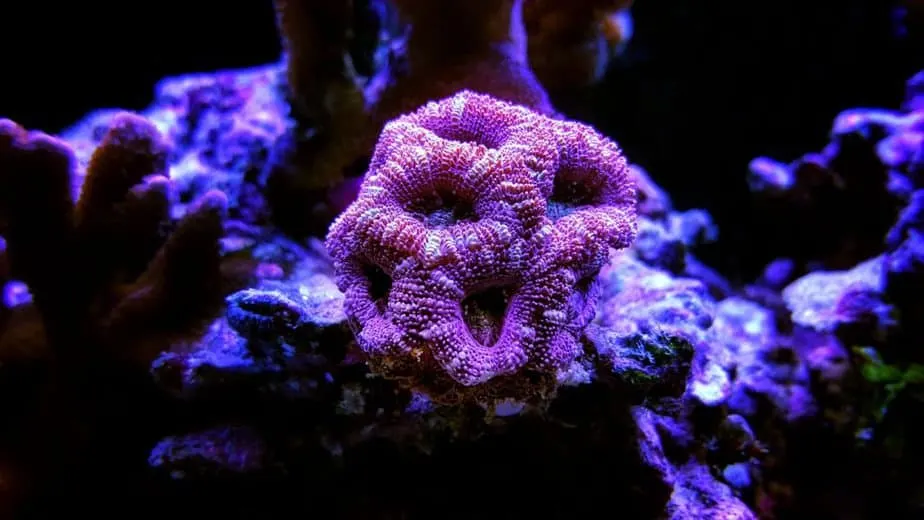
For starters, they are relatively more affordable and readily available. They are also a lot more forgiving of fluctuations in water parameters. Getting them to survive and even thrive is not that arduous of a process and that makes it the ideal choice for novice hobbyists.
Be Mindful Of The Tentacles
One aspect about these corals that is worth mentioning is that they have sweeping tentacles with which they can attack any other coral in their vicinity. As such, their placement should be done in such a way that there is plenty of room between the corals. Trace elements in the water play a big role in the health of these corals and their proper levels should be maintained to ensure their good health. Particular attention must be given to the level of calcium and the pH of the water. Issues here can have detrimental effects on the exoskeleton of these corals.
LPS Lighting And Water Flow Requirements
Both lighting and water flow should be low to moderate. This is because LPS corals naturally occur in deeper waters. In terms of complexity, they are more difficult to keep than soft corals but easier than SPS corals and are the perfect stepping-stones for someone who has successfully kept soft corals and is looking for a new challenge.
LPS Is Relatively Easy To Propagate
Another cool feature about these corals is the way in which they can be propagated. If they are cut cleanly between the polyps, the pieces thus formed, also known as frags, can simply be attached to some live rock in another part of the aquarium or another aquarium altogether and this can give rise to a whole new colony. This, however, should only be attempted if you know what you are doing. It can be just as easy to cause irreparable damage to the existing polyps which will lead to their death.
Slightly More Forgiving Compared To SPS
While these corals aren’t as difficult to keep as their SPS cousins, they still need a strict regimen of water testing and maintenance. The only difference is that you will have a bit more time on your hands to fix any issues that might arise before it becomes fatal for the corals.
Popular Examples of LPS
Some of the best LPS corals include:
- Brain corals
- Plate corals
- Acans
- Chalice corals
- Euphylia
- Duncan corals
Parting Thoughts
Keeping corals successfully is not something that can be learned in a single day and it can take a lifetime to perfect but it is a hobby of incremental gains and as long as you keep at it diligently you will keep making enough progress and you will get to see some of the most stunning sights in the fish keeping hobby which will make it all worth it.

